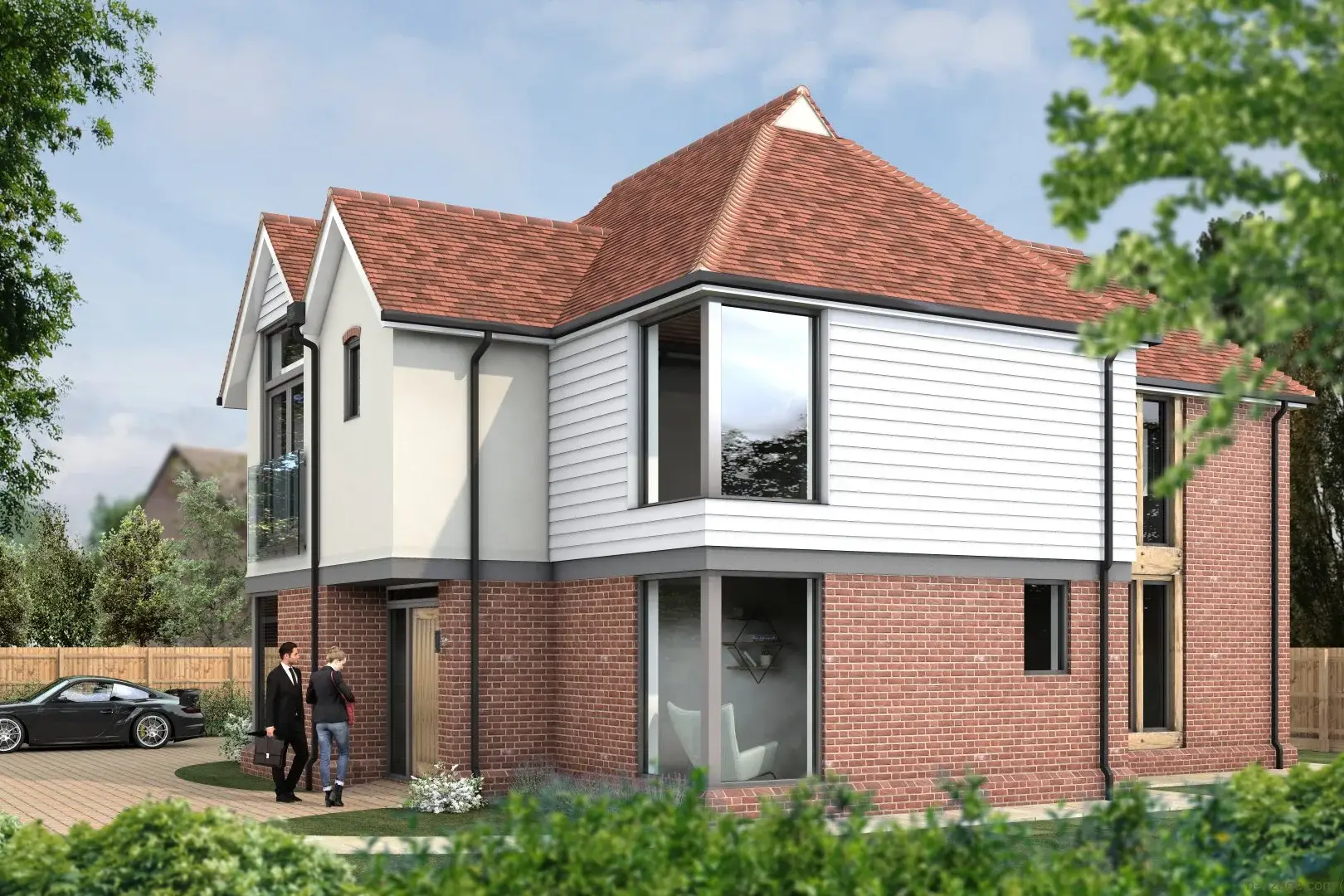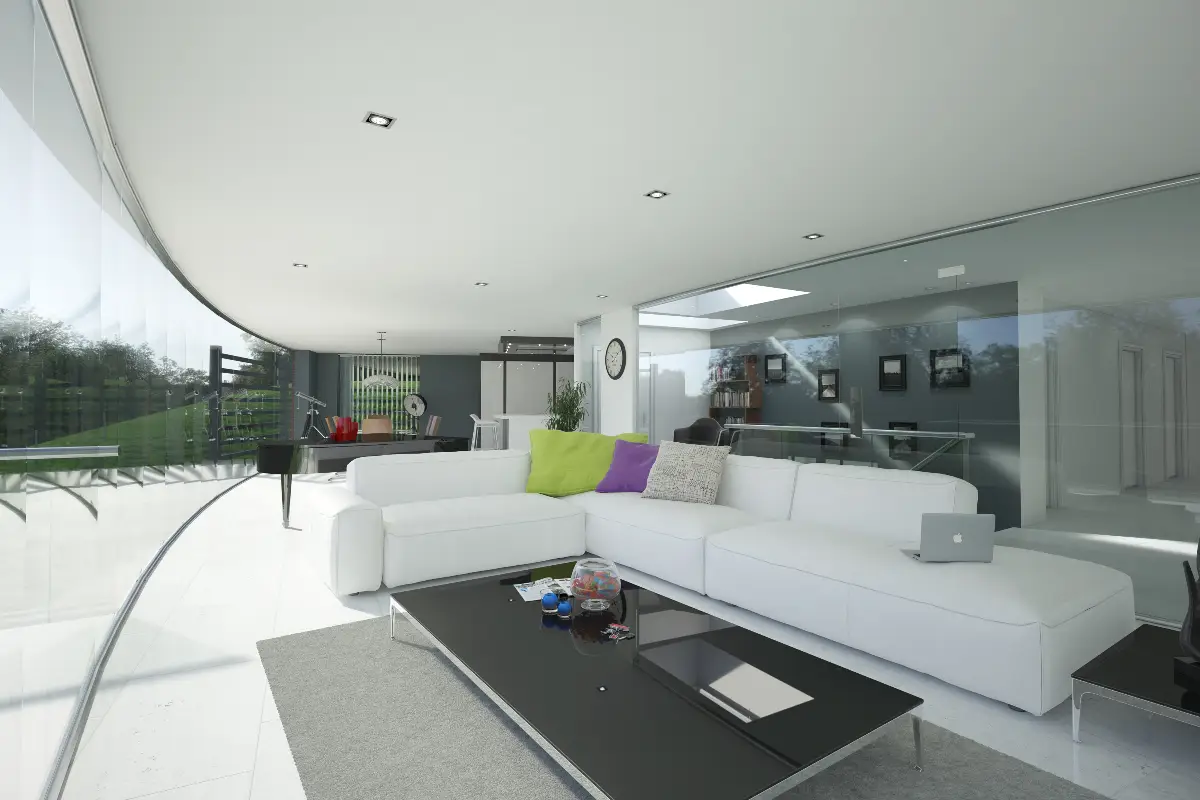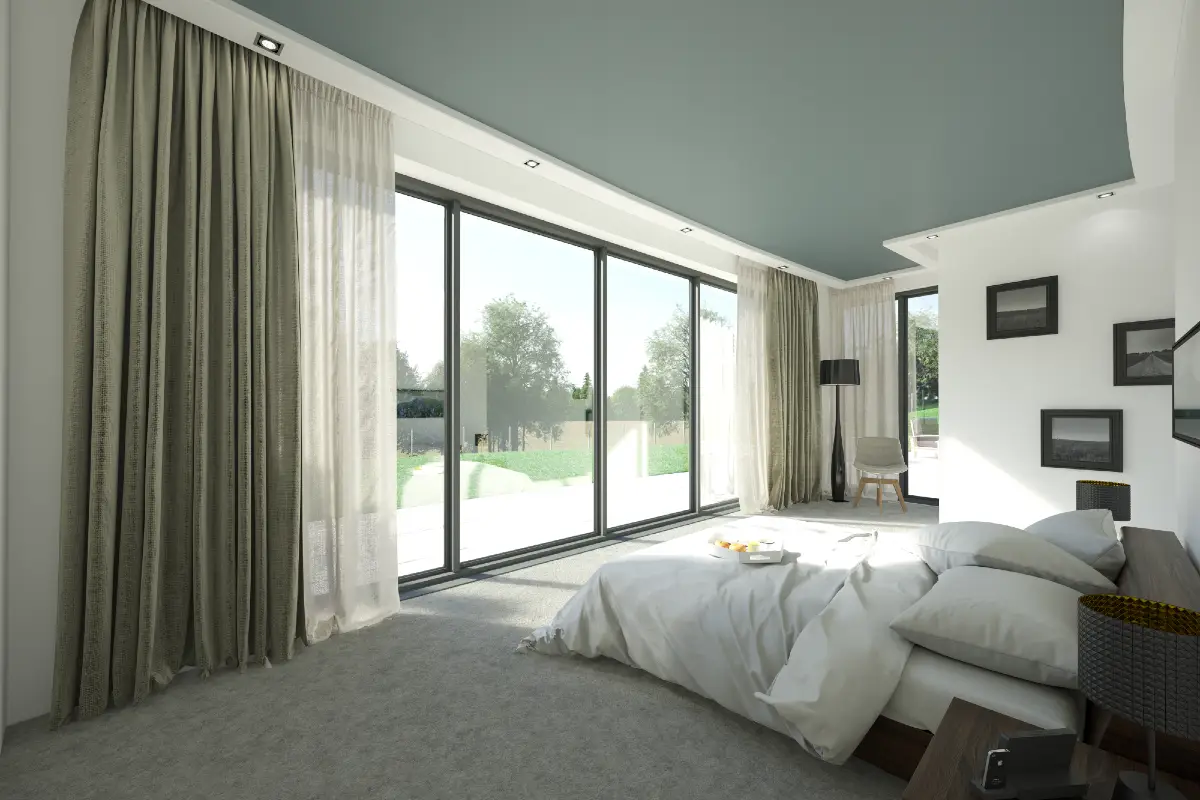Sustainable development on a budget: A guide for small developers

Demand for sustainable homes is growing among buyers, councils, and lenders.
Homebuyers are increasingly more eco-conscious, and rising energy bills have made running costs just as crucial as the purchase price. Councils are also generally more supportive of eco-friendly housing. And many lenders now offer green mortgages or favour energy-efficient builds, making financing more attractive.
So, well-designed, energy-efficient homes are easier to sell.
How to achieve sustainability targets while keeping projects commercially viable
Sustainability and cost-efficiency aren’t mutually exclusive. Many low-carbon strategies, such as maximising a building’s orientation, using breathable materials, or simplifying the shape, are cost-neutral. At the same time, others can save money on labour, materials, and maintenance.
Below, we outline the most efficient strategies for creating energy-efficient, affordable, and environmentally responsible housing schemes that don't compromise on cost or buildability.
Choose the right site for eco-building
Effective plot selection is key to minimising costs and carbon impact.
Prioritise developed land within urban or semi-urban areas. These sites typically have access to existing infrastructure, such as roads, utilities, and drainage, and are less likely to require costly upgrades or lead to planning delays.
Look for locations near public transport and local amenities to reduce reliance on car travel. This supports sustainable development goals and appeals to planning officers and homebuyers.
Check local development or neighbourhood plans early in the process. Some plots may already be earmarked for low-impact development or self-build housing, which can work in your favour when it comes to gaining support from the local authority.
Make the most of the land you’re working with to keep the project financially viable. Thoughtful design can make even higher-density schemes feel generous and livable.
Finally, use the site’s natural features to your advantage. For example, existing trees can be integrated into the plan to provide natural shading and privacy and reduce overheating in the summer. Retaining a slope can improve drainage and offer opportunities for long views.
Bringing the design team on board early
Hiring an experienced architect, structural engineer, and M&E (Mechanical and Electrical) consultant at the early stages - even during feasibility or concept design - can make a big difference.
Early collaboration allows the design team to improve the project's value by achieving the same or better performance at a lower cost through thoughtful design.
It also enables them to develop a cohesive energy and services strategy that supports sustainable development goals and prevents costly redesigns later.
Incorporate passive design principles to reduce energy demand
Energy efficiency starts with passive design. Optimising orientation, natural light, and wind shelter helps lower energy demand and improves year-round indoor comfort. This, in turn, can reduce reliance on active systems, such as heating and air conditioning.
Minimising groundwork is another practical way to reduce build costs and carbon emissions. Where possible, work with the site’s natural topography. Avoid deep excavation, long service runs, or steep driveways that require cut-and-fill operations. If ground conditions allow - meaning the ground is stable, firm, and well-drained - opt for shallow foundations to limit materials use.
Where suitable, consider maintaining an existing garden or established planting. Retaining landscape features can reduce the need for new planting and hard landscaping, and maintain a sense of place.
Use a fabric-first approach
Focus on the building envelope. Well-insulated and airtight walls, floors, and roofs, along with strategically placed windows and doors, deliver the greatest return on investment in energy efficiency and indoor comfort. Prevent thermal bridges, which reduce overall thermal efficiency and can lead to issues such as heat loss, condensation, and damp if not properly detailed.
Consider headline features like green roofs or solar arrays carefully. Only include them if they improve insulation, help with planning, or take advantage of good orientation.
Buyers are increasingly aware of greenwashing. For example, when developers add eco-friendly features that look impressive on paper but don’t deliver measurable benefits. Underperforming eco-technology can undermine buyer confidence and reduce the perceived quality of the scheme.
Select sustainable building materials
While sustainable materials may cost more upfront, they’re an investment in your reputation and the long-term value of the schemes you build. Buyers are increasingly aware of material quality, longevity, and performance, so robust, low-impact homes are more marketable.
Consider how materials will perform during construction, occupation, and at the end of the building’s life to lower a development’s whole-life carbon. Timber, mineral wool, and other low-impact materials have a lower carbon footprint than conventional options like concrete or steel.
Reusing materials like salvaged brick or reclaimed steel can reduce waste, add character, and lower costs.
Working with local suppliers can also help. Shorter supply chains cut transport emissions and reduce delays.
Finally, consider longevity. No material lasts forever, so choosing durable and easy-to-maintain and replace alternatives is essential, especially for high-traffic areas. Natural materials, such as lime plaster, timber cladding, and cork flooring are great options.
Use eco-building practices that reduce waste
Reduce waste and scaffolding, speed up installation, and keep costs down by:
- Simplifying the building’s structure; for example, use a grid-based or modular layout and avoid unnecessary level changes
- Designing around standard material sizes for timber, insulation, and plasterboard
- Using prefabricated systems, such as high-tolerance SIPs or timber cassettes.
Think long-term: regulation, maintenance, and flexibility
Building regulations around energy use and emissions (like Part L and EPC targets) are tightening steadily. What is acceptable today may fall short in a few years, making homes harder to sell and more expensive to retrofit.
Going beyond current minimum standards helps future-proof your scheme and offers a strong sales advantage.
Design for flexibility. For example, include multi-use spaces, open-plan layouts, sliding doors, level thresholds, and wide doorways. Homes that adapt to different life stages, family setups, or accessibility needs are more marketable and likely to stand the test of time.
Include additional service routes and access points for future upgrades or system changes, such as battery storage, EV charging, or heating system changes.
Finally, choose durable, easy-to-maintain materials, such as robust cladding, to reduce upkeep costs, simplify future repairs, and support resale value. These are often sustainable, too.
Take advantage of available funding
Apply for local grants, green mortgages, and national retrofit schemes. Hire an architect to submit early evidence of intent and a coherent sustainability strategy to maximise your chances of securing funding.
Consider phase development
Breaking a sustainable development project into smaller, manageable phases can reduce upfront financial pressure and spread risk across the build timeline.
Phasing also gives you a chance to adapt. As the project progresses, you can assess real-world performance, buyer feedback, and market demand to adjust specifications or layout choices. This helps create a more responsive, efficient, and commercially viable scheme.
Involve stakeholders early
For eco-friendly housing schemes and multi-unit developments, engaging with local residents, community groups, and neighbourhood organisations early can improve planning outcomes. It helps build trust, reduces the risk of objections, and ensures the development responds to genuine local needs.
Planning officers often view early stakeholder engagement positively, especially for larger or more sensitive sites.
At Taylor Roberts, we specialise in helping small developers deliver commercially-viable, future-proof schemes across Kent and the South East.
We work with you to design sustainable developments that meet planning requirements, perform over the long term, and stand out in a competitive market. We go further by taking a landscape-led approach that gives every scheme real character and a strong sense of identity. Whether you’re planning a single home or a housing scheme, we can help you set the project up for success.
Call us on 01227 457 545 or email us on enquiries@taylorroberts.co.uk to discuss your project.
Contact our team today for expert property advice - book now for free.

Architectural Insights
Insights, updates and ideas from the studio - here’s what we’ve been writing about lately.


